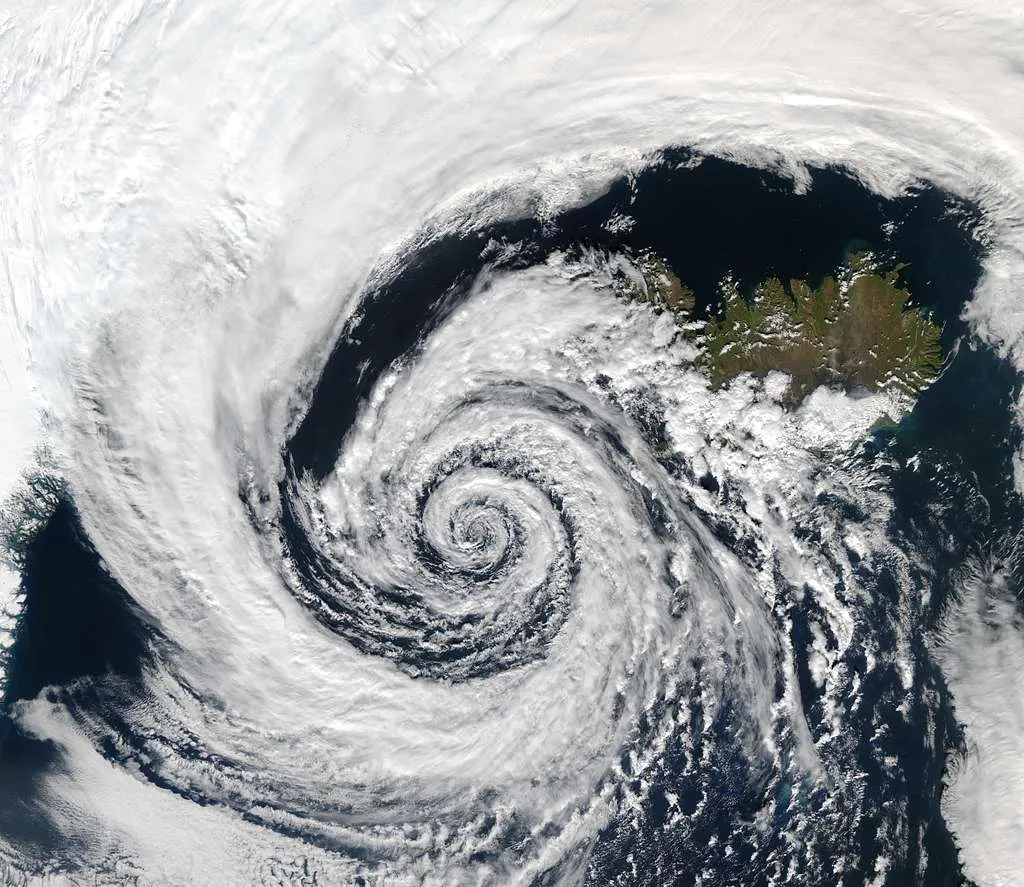A bomb cyclone is a rapidly intensifying storm system characterized by a significant drop in atmospheric pressure over a short period—typically a decrease of at least 24 millibars in 24 hours. This phenomenon is also known as explosive cyclogenesis or bombogenesis, and it often results in severe weather conditions, including heavy rain, snow, strong winds, and coastal flooding.
Formation and Mechanics
Bomb cyclones form under specific atmospheric conditions, often involving the collision of contrasting air masses:
- Cold, dry air from the north meets warm, moist air from the south, creating a sharp temperature gradient.
- This clash fuels the storm, leading to rapid intensification as warm air rises and cold air sinks, generating a significant drop in barometric pressure.
- The process is typically facilitated by strong jet stream activity, which amplifies the storm’s strength.
Key Features
- Rapid Pressure Drop: The defining feature of a bomb cyclone is its rapid intensification, marked by the steep pressure drop.
- High Winds: The rapid pressure changes result in powerful winds, sometimes reaching hurricane-force levels.
- Severe Weather: Depending on the region and season, bomb cyclones can produce blizzards, heavy rainfall, or extreme coastal flooding.
Impacts
- Winter Storms: In colder regions, bomb cyclones often bring heavy snow and blizzard conditions. For instance, the United states. East Coast frequently experiences such events during the winter, sometimes referred to as nor’easters.
- Flooding and Coastal Erosion: When bomb cyclones form over or near the ocean, their strong winds and low pressure can cause storm surges, flooding, and coastal erosion.
- Transportation Disruptions: These storms often lead to hazardous travel conditions, including flight cancellations and road closures.
Notable Examples
- January 2018 Bomb Cyclone (“Bombogenesis Blizzard”): This storm brought record snowfalls and powerful winds to the U.S. East Coast, disrupting travel and causing significant damage.
- October 2021 Bomb Cyclone: This system impacted the Pacific Northwest, bringing heavy rain and flooding to California and other states.
Is a Bomb Cyclone a Hurricane?
While bomb cyclones and hurricanes share similarities, such as intense winds and low pressure, they differ in their formation and characteristics:
- Hurricanes form over warm ocean waters and derive energy from heat.
- Bomb cyclones, in contrast, often form over land or colder waters and result from atmospheric pressure changes rather than heat.
Conclusion
A bomb cyclone is a dramatic and rapidly intensifying weather phenomenon capable of causing widespread disruption and damage. Understanding its mechanics and potential impacts is crucial for preparedness, especially in regions prone to such storms. Advances in meteorology have improved forecasting, giving people more time to prepare for these intense weather events.



